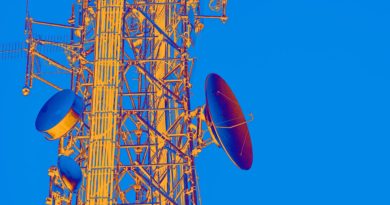Does 5G cause cancer? Claims need evidence, not opinions | by Stefani Forster | Apr, 2021 | Medium – Medium

5G will allow us to do amazing things, like power self-driving cars, enjoy virtual reality experiences and even provide remote health care. But there’s growing concern over what it might do to us, too — like weaken our immune systems, and even cause cancer.
Alarmists are claiming a conspiracy, comparing big telecoms to Big Tobacco, or blaming Bill Gates (and linking it all to COVID-19). Meanwhile, scientists liken 5G scaremongers to anti-vaxxers and quacks.
The result is an ugly public battle, with well-meaning journalists giving credence to both sides in the name of “balanced reporting.” This muddles the truth even further.
Thankfully, we have scientific rigor to cut through the noise. In the debate over whether 5G causes cancer, opinions don’t matter — we have to look only at the science to determine fact from fiction.
Public alarm over radiation exposure is nothing new. Microwaves, high-voltage power lines, and cell phones have all led to panic and paranoia over radiation exposure some point or another.
“Radiation” is a loaded term meant to scare, but in reality, it’s all around us; from the sun’s cosmic rays to trace amounts of radioactive minerals found in our food and drinking water. (Fun fact: bananas are slightly radioactive.)
Not all radiation is created equal. Radiation levels and their potency are categorized on an electromagnetic spectrum, which is divided into two categories: Ionizing and non-ionizing.
Ionizing radiation — which we’re exposed to during air travel, in X-rays and tanning beds — can damage the DNA in your cells, either killing them or mutating them in ways that can lead to cancer.
Non-ionizing radiation, on the other hand, is too weak to break chemical bonds. WiFi and cell phones, which currently operate in the microwave portion of the spectrum, fall into this category. For radiation to be considered dangerous, it needs to be ionizing, which 5G (and 4G and 3G) is not.
By harnessing millimeter wave (mmWave) spectrum technology, 5G promises faster data speeds at a higher electromagnetic radiation frequency than 4G — triggering consumer anxiety over increased exposure to radiation and cancer.
But…we’re not talking Chernobyl here. Visible light emits more radiation than cell phones. And even at these higher frequencies, the skin acts as a barrier, protecting us not only from visible light (not including ionizing, harmful UV rays) but from microwaves, too.
I asked Dr. David Robert Grimes, an Irish physicist and cancer researcher, if the current health concerns over 5G radiation had any merit.
“I find 5G so boring,” he said. “Unlike most topics where you can have an interesting, nuanced discussion, there’s literally no evidence for any of the things [alarmists] say, and plenty against it.”
Scientifically speaking, he thinks we should be more concerned about radiation emitted from our light bulbs than our cell phones. And yet…
I wondered: If we know cell phones and 5G are non-ionizing, then why are they listed as “possible carcinogens” by the International Agency for Research on Cancer (IARC)?
Currently, there are four levels of carcinogen classifications.
Class 1 is carcinogenic to humans. This includes everything that we have evidence causes cancer. Tobacco, X-rays, drinking alcohol and eating processed meat are all in this category.
Class 2 is essentially a dumping ground. “It’s stuffed with everything,” says Grimes. “It’s basically, ‘maybe causes cancer but we don’t have any evidence for it,’ which is basically everything in human creation.”
To complicate things further, Class 2 is subdivided into two categories: 2A (probably carcinogenic) and 2B (possibly carcinogenic). Red meat, shift work and hot beverages over 65 degrees Celsius fall in the 2A category. The 2B list is significantly longer, and includes things like the aloe vera plant and radio frequencies, such as those associated with our wireless phones.
Class 3 includes things like water, which we are quite certain isn’t carcinogenic, even though it hasn’t been definitively proven. Half of the world’s substances fall into Class 3.
And in case you didn’t get the idea of how low the bar is: As of August 2019, there are no materials on earth that fall into Class 4, which means there is nothing that we can know for sure doesn’t cause cancer.
What people don’t realize is these classifications describe the strength of the scientific evidence about an agent being a cause of cancer, rather than assessing the level of risk.
Unfortunately, the IARC is notoriously bad at communicating this.
So what does this all mean, as far as our risk of developing cancer? Essentially, we don’t know what we don’t know. There’s no concrete evidence we can point to that tells us cell phones (or aloe vera, or hot beverages) cause cancer or to what extent. But there’s also not enough evidence to prove there’s no link whatsoever, either. This is true for everything that is currently not in Class 1, and virtually all around us.
That isn’t to say we shouldn’t be wary or conduct further research. “Given the potential consequences for public health of this classification and findings, it is important that additional research be conducted into the long‐term, heavy use of mobile phones,” IARC Director Christopher Wild said in a 2011 statement.
“While we don’t know of any mechanism now, we do have to keep our minds open,” Grimes said. “Maybe there’s something really weird that we should be keeping an eye out for, continue researching and running studies for potential harms.”
Thankfully, that’s what scientists have already done for decades regarding microwave radiation, and indeed, all types of electromagnetic exposure.
Epidemiological research on 5G and cancer
As far as the laws of physics and ionization are concerned, 5G shouldn’t worry us. But that’s only one field of scientific study. After all, we can’t rely on physicists to inform our knowledge on biochemistry. What about epidemiological evidence?
In health research, randomized controlled trials (RCT) — where researchers take test subjects and randomly assign them to either treatment or placebo — are considered the gold standard of evidence. Unfortunately, it’s impractical, if not impossible, to conduct an RCT on cell phones and cancer on humans. We’d have to assign particular levels of cellphone use to thousands of people, and trust they’d all maintain that level of use for at least five years, to get accurate data.
The next best thing are cohort studies. A massive, 13-country INTERPHONE cohort study conducted by the IARC found no elevation of gliomas or brain tumors in populations that used phones heavily, except perhaps at the highest level. Even then, they concluded that “biases and error prevent a causal interpretation with regard to the increased risk of glioma observed at the highest exposure levels.”
Even if mobile phones caused some brain cancers, what you’d expect to see is something similar to smoking — the heavier the smoker, the more likely they are to develop lung cancer — the more cell phone usage, the more likely cancers would manifest.
According to Grimes, “that dose-response relationship doesn’t exist for cell phones. It isn’t there. It’s just noise. That would imply, from an epidemiological standpoint, that there’s no evidence of harm.”
As cell phones have become more and more ubiquitous, brain tumor rates have not been going up in the United States. If cell phones cause brain tumors like cigarettes cause lung cancer, we should have seen an alarming increase by now.
Nonetheless, the scientists involved in the study could not agree on how its results should be described. John Niederhuber, the then-director of the National Cancer Institute, said that INTERPHONE “illustrates how difficult it is to identify and corroborate, or definitively rule out, any possible association between [cell phones and cancer].”
Adding to the confusion: the INTERPHONE study was partially funded by the mobile phone industry, though it was subject to guarantees that the study would remain scientifically independent. This garnered significant skepticism over its results. Consequent cell phone radiation studies funded by telecom companies have, understandably, led to well-placed concerns about bias, while adding fuel to the conspiracy fire.
Still, we can point to at least five other high-quality cohort studies — published in the Journal of the National Cancer Institute, the American Journal of Epidemiology, the European Council of Cancer Prevention, the International Journal of Epidemiology, and Bioelectromagnetics — that overall, found no increased risk for cancer, but perhaps a small increased risk for the non-cancerous tumor neuroma. (Researchers noted these tumors were so rare that they were uncertain about the link.)
The five studies, published between 2009 and 2016, were not funded by the cell phone industry and are less likely to be biased. But it’s important to note that how we use cell phones has changed dramatically over the last decade. The data could be outdated. It’s possible that longer-term studies will find larger cancer effects in another five or 10 years, but until then, the research so far has one thing in common: lack of evidence. This is a major problem with cell phone science at the moment.
Biological research on radiation with rats
What about animal studies? By studying cell phone radation effects on rats and mice, we can supplement our understanding of cell phone radiation’s effect on human biological functions. But animal research has its limits, too.
A series of studies that were released in October 2018 by the National Toxicology Program of the National Institutes of Health (NIH), went to great lengths to study the effects of cellphone radiation in rats and mice. They suggested there may be a link between noncancerous heart and brain tumors in male rats. But there were problems.
For one thing, the rats were exposed to more radiation and for longer durations than humans typically experience. There was also no consistent pattern found for exposed female rats or the male and female mice — only the male rats. The rats exposed to cell phones strangely seemed to outlive the rats in the control group. And unlike tobacco, there was no clear linear relationship between higher levels of cell phone exposure and more cancer at tissue sites.
So, non-ionizing radiation from cell phones may not be completely harmless, and could perhaps cause biological changes in animals in some circumstances. But but the evidence is weak and results ambiguous, at best.
Nonetheless, in a phone interview with Dr. Anthony B Miller — a former oncology professor from the University of Toronto, and an outspoken advocate against 5G and all wireless communication technology — he warned, “we are potentially on the edge of a major human disaster.”
He said numerous studies have shown a clear link to human brain cancer. (They haven’t). And that we “already know this form of radiation damages other biological systems” (we don’t), and that in animals, we’ve seen “cancers with nerves of the heart,” (citing the rat study, which only found weak links with noncancerous tumors — and no link to cancer). He further predicted 5G will result in “major problems in the brain, with most people developing an early form of Alzheimer’s disease.” But there hasn’t been any conclusive evidence linking microwaves to Alzheimer’s. Some studies even curiously suggest cell phone use might actually fight the disease.
Here’s the thing: 5G alarmists don’t ignore the current data. Quite the opposite. They cite the current research out there and draw their own conclusions, sometimes differing from the original researchers’. Grimes calls this, “massaging a lack of evidence into evidence.”
“To me, that’s very similar to how anti-vaccine cranks operate. They will take all of this positive safety data and analyze it in a certain way, so they can say, ‘Aha, look at that!’ But the kind of tests they are doing are called post-hoc tests. It’s cheating.”
Post-hoc testing is a particular sore spot for Grimes. He’s decried this practice to call out charlatans who take advantage of vulnerable people using pseudoscience, particularly autistic people and cancer sufferers.
“There’s an old saying that goes, if you torture the data, it will confess to anything.”
When an epidemiologist sets up their study, they pre-specify what outcome they’re looking for and what they’re looking to measure. They can’t just disregard data points that don’t suit them. But if someone has their own agenda, they can, and frequently do.
Scientists are not immune from human psychology, and there are plenty of scientists that engage in motivated reasoning. The classic example is Andrew Wakefield, who had data about the fake link between vaccines and autism, which still does huge harm today. His motivation was financial, but a lot of people’s motivations can be ideological.
“You get people with very strong opinions,” says Grimes. “I call it, ‘retired professor syndrome,’ in that they decide they no longer need evidence for those opinions. And I would argue, they’ve forgotten what science is.”
So what’s the evidence? Where’s the science? Here’s what we know: The most consistent studies we have linking mobile phones to cancer have been thoroughly researched and proven insufficient.
5G’s radiation is fundamentally no different than WiFi or 4G networks, as far as the microwave spectrum is concerned. However, it will be more pervasive and at higher frequencies, and with our cell phone habits constantly evolving, it is certainly worth studying further. Just because there hasn’t yet been any solid epidemiological evidence to suggest it’s harmful, doesn’t mean we should abandon harm-reduction research as we enter into the 5G era, but based on what science tells us, there’s no need to panic.
Many anxieties over 5G technology are cause for immediate concern — like the political and ethical ramifications of data storage and privacy. But radiation exposure simply isn’t one of them.
*** This article has been archived for your research. Find the original article here ***


